"Tailed pets" - this is the name of cats and dogs. Nature does not create anything superfluous or unnecessary, which means that this part of the body is necessary for the animal. Why does a dog need a tail? What functions does it perform?
Physiological features and types
From the point of view of physiology, the canine tail is a continuation of the spine and consists of several vertebrae.
In different breeds, it has a different shape and length. These indicators depend on the place where this variety was bred, as well as on the functions for which it was intended.

The following types of tails are distinguished.
- "Log". Straight, horizontally elongated thick tail. This form was inherited from a common ancestor - the wolf. Currently very rare. Examples include St. Bernards, Newfoundlands, Labradors.
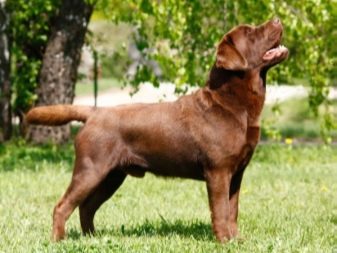
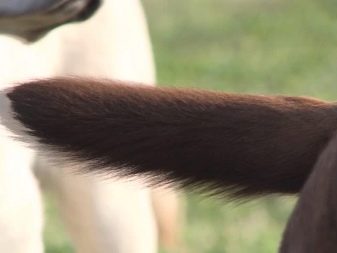
- A little different from the "log" type of tail is called "Saber". The most characteristic carriers are Dalmatians, Great Dane, German Shepherd, Collie. When the dog is calm, such a tail is lowered and slightly bent, resembling a saber. In an excited state, it rises horizontally or slightly above the line of the back.

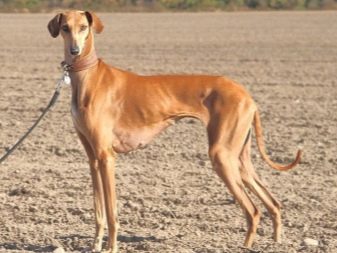
- Tail hook the shape is similar to the previous version and differs only in that its tip is bent more strongly. Available in Caucasian and South Russian shepherds, Bedlington.

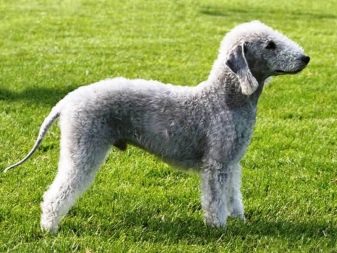
- «Crescent". This form is found in mestizos of huskies, as well as in Chow Chows, Spitz. Its feature is that it bends over the back, but does not lie on it.
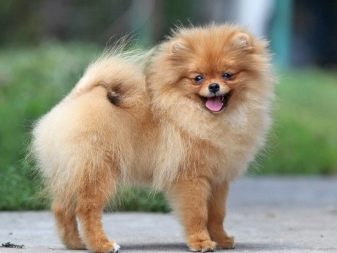
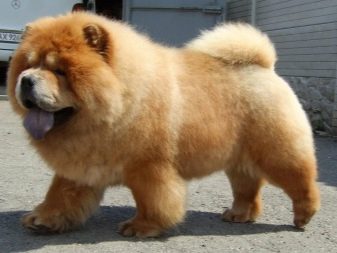
- The next type is the “ring”. Fully bent and lies on the back of the dog. Most often, such breeds are possessed by northern breeds, both hunting and sledding, such as Siberian huskies, huskies, and Alaskan malamutes.Surprisingly, these species are the closest descendants of wolves, in which the tail has the shape of a log.
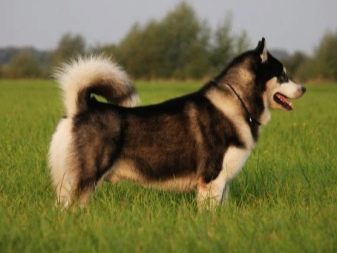
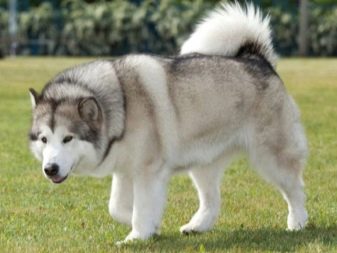
- There are breeds with a tail in two turns (pugs), in the form of spirals (Akita Inu, Bassenji) or corkscrew (French Bulldog).


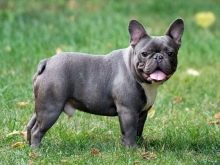
- Among hunters in ancient times there was a separate terminology in the name of different types of canine tails. For example, for greyhounds it was called the “rule”, for the hounds - “gon”, for the pointers - “rod”. A thin, long-coated setter tail is called a feather, wing, or flag.
An interesting fact: when crossing individuals with straight and curled tails, the offspring will most often have a tail with a sickle or ring.



Tail functions
If we draw an analogy with the human body, then the tail can approximately be compared with the hands. Swinging while walking, gesturing during a conversation - these hand functions help a person to feel more confident.
Dogs are exactly the same: with the help of tail movements, they maintain balance, especially when running fast or walking on uneven surfaces, in sharp bends, when you need to quickly catch up to runaway prey. This organ helps them stay on the water while swimming.
The tail is also important when communicating with relatives. Directly below it, on the sides of the anus in animals, special secretory glands are located. They secrete a fluid with which dogs mark territory and communicate about themselves to their fellow tribesmen. The tail raised upwards with strong movement, like a fan, carries its smell around. If the dog wants to keep “incognito”, it lowers its tail, closing the glands.

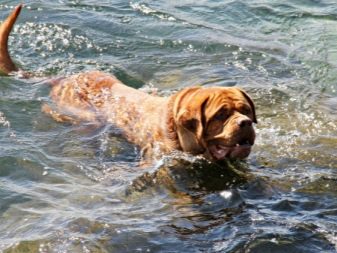
The different position and movement of the tail will help determine the mood, as well as the immediate intentions of the dog.
Here are some meanings.
- Relaxed, kept flush with the back - the dog is calm and friendly. But at the same time she is attentive to what is happening around.
- Raised vertically up, tense and motionless - the animal feels some danger and is preparing to confront it. It can also smell prey.
- Omitted - expression of humility, submission and recognition of authority. It is a sign of sadness when the dog misses the owner or indicates a malaise.
- Vigorous propeller movements - Delight, wild joy at a meeting.
- Tightly tail - the dog is afraid of something.
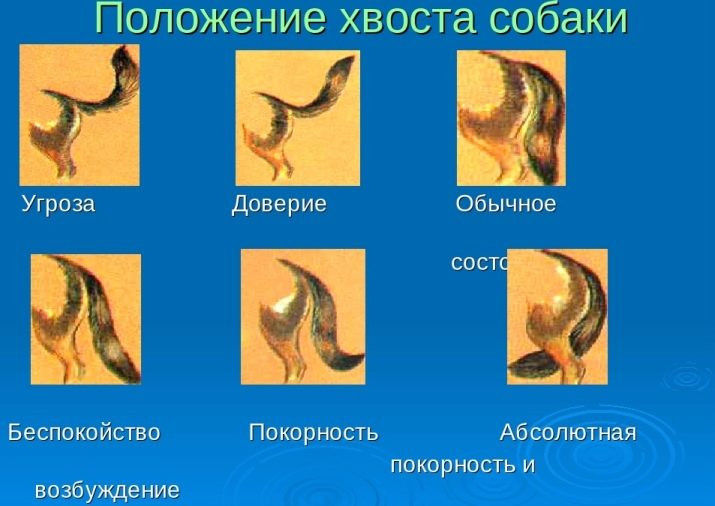
Why do pets wag them?
If you carefully observe the pet, you will notice that the tail is almost constantly in motion.
A dog with his help communicates with the outside world, owners, relatives, passes information. The pack leaders, the "authorities", for the most part keep their tail proudly raised up, thus personifying the dominant position in the area and spreading their smell.
In the process of studying the behavior of animals in different situations, scientists have identified one interesting feature. Under the influence of positive emotions, tail movements are more directed to the right, and with a negative, negative impact, on the contrary, to the left.
This orientation can be quite insignificant, invisible to the human eye, however, other dogs perfectly see and understand this.
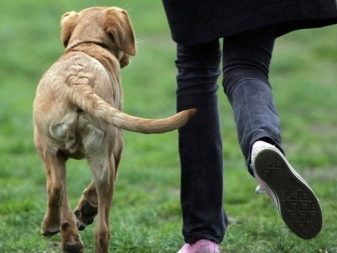
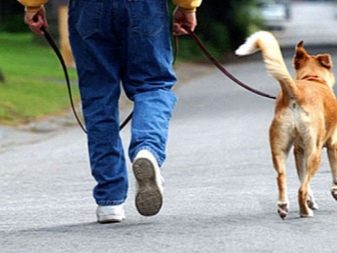
Wagging the tail is not always a sign of joy and good mood.
The dog waves to them when meeting and getting to know his relatives, when he expresses humility to the owner and wants to apologize for some trick, feels uncomfortable in the company of strangers, but does not dare or is afraid to show aggression.
Puppies, when they are born, do not know how to wag their tail. This skill gradually develops by about a month and a half. The kid perceives the tail as something extraneous, plays with it, tries to catch it.
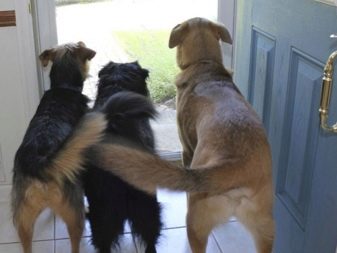
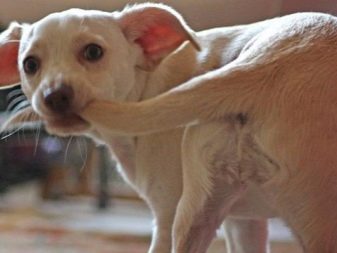
If an adult dog begins to do the same, there may be several reasons:
- misses, tries in such a way to attract the attention of the owner, play;
- is under the influence of stress, panic attacks;
- a nervous disease is also possible, a veterinarian consultation is already required here.

Pros and cons of stopping
Tailless dogs are not in nature. And no matter how many breeders tried to breed such a breed, nothing came of it.
In ancient Rome, it was believed that by cutting off the tail, you can protect the dog from being infected with rabies.
The fashion for stopping, that is, complete trimming of the tail, has its roots in medieval England.

At that time, a tax on the length of dog tails was introduced there. The owners, wanting to save money, began to shorten them. Gradually, this trait began to be considered the standard of some breeds (especially bred in the UK).
Also cut the tails of the participants in dog fights. Now, in connection with a more detailed study of the physiology and psyche of dogs, the appropriateness of this procedure is being called into question.
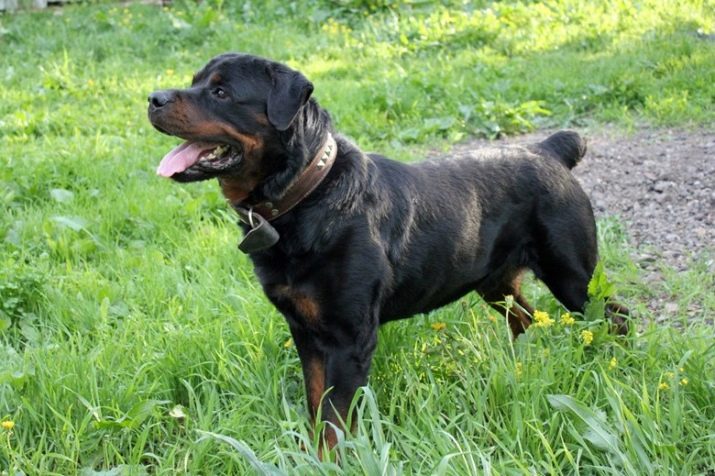
As in any business, there are pros and cons.
Positive factors include considerations of the safety of the animal when performing any task. For example, during the pursuit of a predatory beast, the health and even life of a dog largely depends on whether the enemy is able to grab her tail. Well, if he is not, then there is no danger.
The same applies to animals serving in the armed forces, law enforcement agencies, rescue teams, organizations involved in the destruction of rats.
Hence, tail removal surgery is performed exclusively according to indicationswhen this is due to the care of maintaining the life and health of the dog.
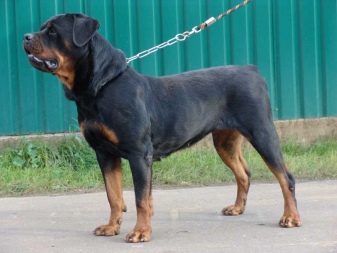
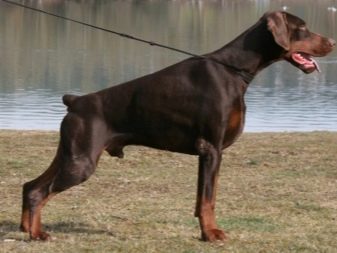
The negative side is that the body is injured. If relief is necessary, it is done at a very young age, preferably before the puppy reaches the age of five days.
If the operation is unsuccessful, the dog will experience constant pain and discomfort.
In addition to physical damage, the dog is also subjected to psychological stress, as the process of communication with relatives is disrupted.

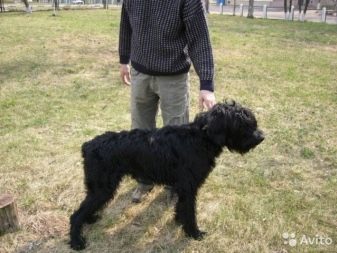
All of these factors can lead to a change in character and behavior for the worse.
Therefore, recently in many countries, stopping has been banned as an inhumane act in relation to animals. It is allowed to make it only to those dogs in the performance of which the presence of a tail poses a certain danger.
Of course, no one has yet canceled the existing breed standards, and individuals fully compliant with them are allowed to participate in exhibitions. Each owner decides whether to remove the tail of his dog or not. But if it is already decided to stop, then you should remember important points:
- you need to do this at an early age, during the first five days of life;
- The operation must be performed by a veterinarian.
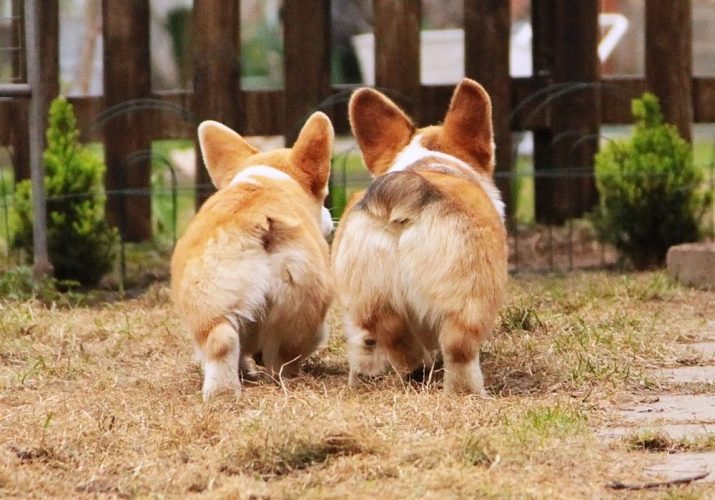
Given all the above points, we can confidently say that the dog really needs a tail - for movement, communication with other dogs and with people. In the end, just for beauty and self-confidence - because with what pride they carry this natural decoration!
About why a dog needs a tail, see the next video.








































